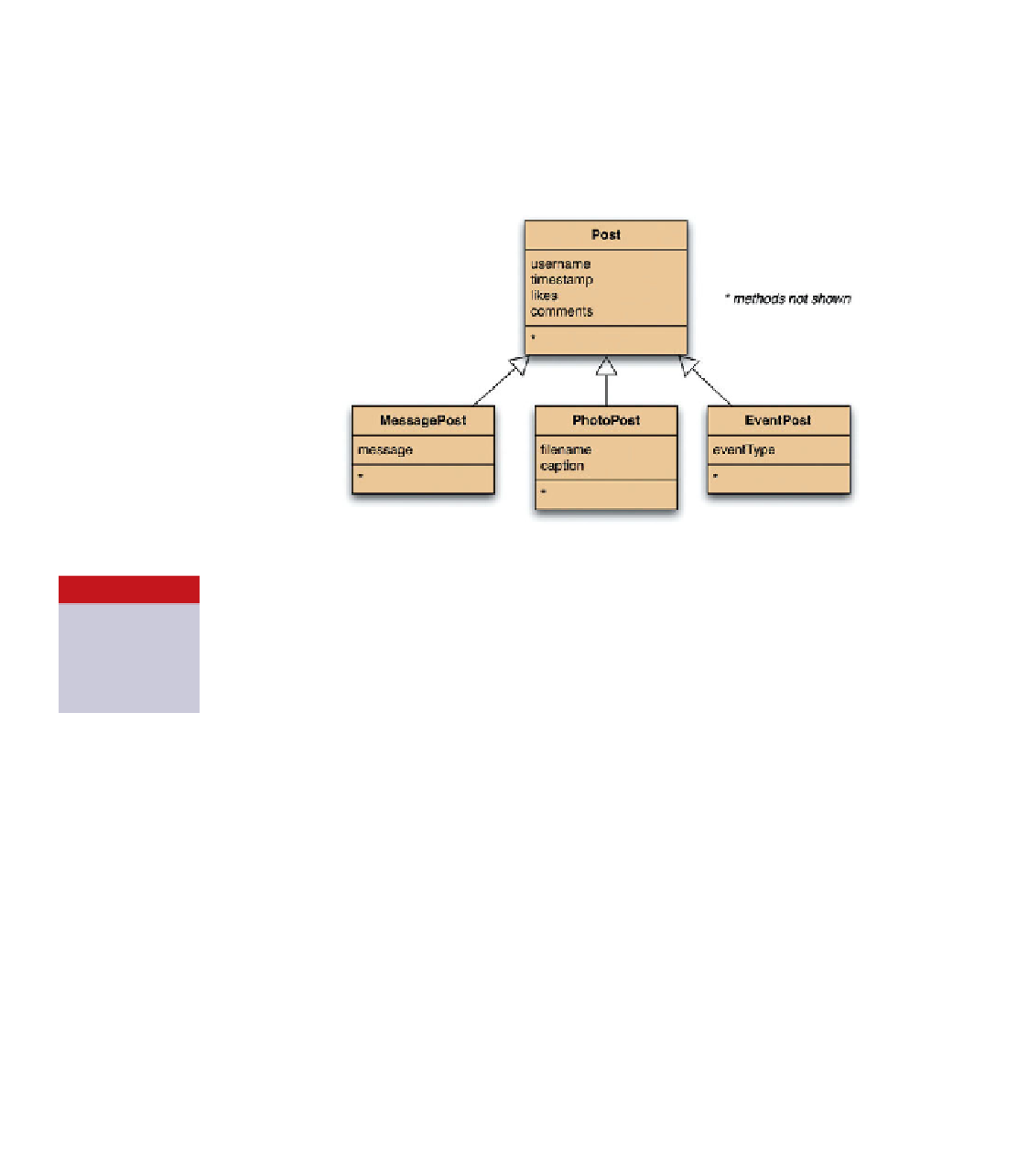Java Reference
In-Depth Information
achieve this, we can now define a new subclass of
Post
named
EventPost
(Figure 8.7). Because
EventPost
is a subclass of
Post
, it automatically inherits all fields and methods that we have
already defined in
Post
. Thus,
EventPost
objects already have a username, a time stamp, a likes
counter, and comments. We can then concentrate on adding attributes that are specific to event
posts, such as the event type. The event type might be stored as an enumeration constant (see
Chapter 6) or as a string describing the event.
Figure 8.7
Network
items with an
EventPost
class
This is an example of how inheritance enables us to
reuse
existing work. We can reuse the code
that we have written for photo posts and message posts (in the
Post
class) so that it also works
for the
EventPost
class. The ability to reuse existing software components is one of the great
benefits that we get from the inheritance facility. We will discuss this in more detail later.
Concept:
Inheritance al-
lows us to
reuse
previously written
classes in a new
context.
This reuse has the effect that a lot less new code is needed when we now introduce additional
post types. Because new post types can be defined as subclasses of
Post
, only the code that is
actually different from
Post
has to be added.
Now imagine that we change the requirements a bit: event posts in our
network
application
will not have a “Like” button or comments attached. They are for information only. How do we
achieve this? Currently, because
EventPost
is a subclass of
Post
, it automatically inherits the
likes
and
comments
fields. Is this a problem?
We could leave everything as it is and decide to never display the likes count or comments
for event posts—just ignore the fields. This does not feel right. Having the fields present but
unused invites problems. Someday a maintenance programmer will come along who does not
realize that these fields should not be used and try to process them.
Or we could write
EventPost
without inheriting from
Post
. But then we are back to code
duplication for the
username
and
timestamp
fields and their methods.
The solution is to refactor the class hierarchy. We can introduce a new superclass for all posts that
have comments attached (named
CommentedPost
), which is a subclass of
Post
(Figure 8.8). We
then shift the
likes
and
comments
fields from the
Post
class to this new class.
MessagePost
and
PhotoPost
are now subclasses of our new
CommentedPost
class, while
EventPost

Search WWH ::

Custom Search